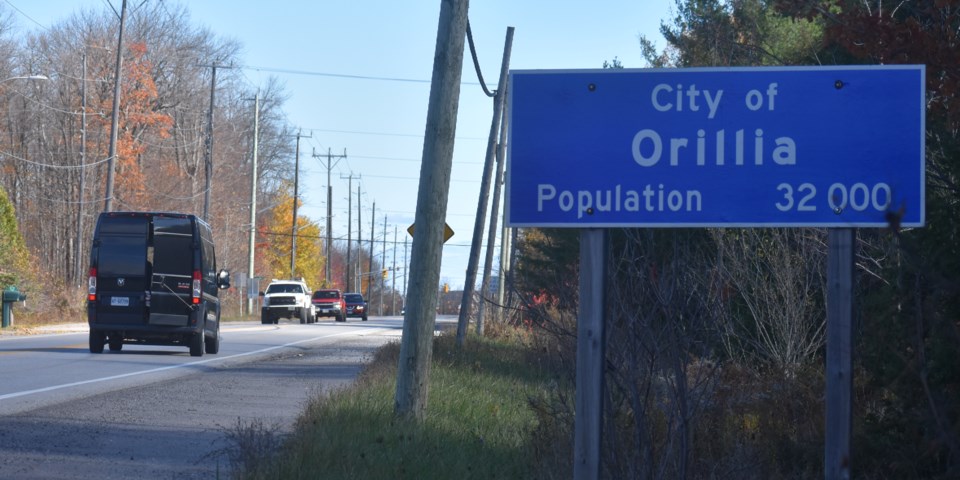What are the final boundaries of Orillia?
At what point do we say to ourselves, “We’re here. We are the physical city we want to be?”
If there are no final boundaries for Orillia and its sister cities, what is the logical conclusion? The ultimate forecast is that Orillia will be lost in a single, sprawling metropolis that stretches from here to the shores of Lake Ontario and beyond.
It has already happened to numerous communities: Markham, Vaughan, Georgetown, etc. It is the indisputable outcome of endless growth, the model we have turned into religious dogma.
I’m sure there are many people living there who are happy. But that’s not for me. It’s why I chose Orillia, and why I’ve stayed all these years.
I like the place. It has a human scale that is just about right. I like knowing the downtown merchants by name. I like being able to cycle anywhere in the nice weather. I like that I’m surrounded by forests and lakes and rivers and wetlands that rival anything in Ontario.
I know this makes me the worst kind of heretic.

Please don’t misunderstand me. I don’t want to pull up the drawbridge and defend what we have from all newcomers.
I always want to live in a community that is dynamic and evolving and welcoming (a vision nicely sketched out in the city’s policy directions report of December 2024). But I also want to preserve the things that make Orillia Orillia.
To do so, we might consider a few non-negotiables. Like boundaries.
Proponents of endless growth say trying to hold on to this “Orillianess” is impossible, even selfish.
Without growth, there are no jobs and no room for new people who might also like to live here. Our kids move away. Poverty grows. Opportunity shrinks. It’s a compelling argument, but it assumes two things: that endless growth solves all problems and that there are no other viable models to pursue in any case. Both are demonstrably wrong.
On Feb. 4 at noon, a special council meeting will be convened to take the next steps in Orillia’s boundary expansion project and Official Plan review.
This project is being driven by the growth plan of a provincial government that holds unbridled development as a near-mystical good. The province forecasts Orillia’s population to grow to 49,000 by 2051 with 26,000 employees. These numbers can be reasonably debated, but no matter where you land, it’s all speculation.
As a result of this growth speculation, Orillia is being encouraged to sprawl.
Surprisingly, neither the province nor the city consultants have any idea what this boundary expansion will cost — in currency or in environmental degradation.
“There is no longer a requirement to avoid areas with high potential to negatively impact water quality and quantity,” states a Jan. 6 staff report to the city on the best option for expansion. “There is no longer a requirement to avoid areas of provincial significance such as provincially significant wetlands.”
The same report notes that no matter which expansion option the city adopts, upgrading and expanding infrastructure is going to be expensive.
“However, an estimate of these costs is unknown at this time,” the staff report says. “Through the negotiations with the affected townships, there will be financial contributions for the annexation from land. However, at this time, the costs of securing land are unknown.”
Would you renovate your house without having some estimate of the cost?
In 2023, after Hamilton and Halton Region pushed back against the province for dramatically imposing expanded boundaries on them and 10 other cities, the province reversed its decision and changed ministers. New Housing Minister Paul Calandra said the boundary decisions weren’t done “in a manner that maintains and reinforces public trust.”
Interestingly, Orillia continues to operate within the framework of that provincial government agenda. At council’s request, city staff examined more intensification, and made a reasonable recommendation for expansion that is much more modest than earlier estimates. But there’s another, admittedly difficult option.
Refuse the boundary expansion altogether.
Use the research done to date to develop an intensification strategy that is not married to some speculative future population number, but which reflects the findings of the policy direction report and, by extension, the people of Orillia.
Push back hard, and then work collaboratively with Simcoe County, Oro-Medonte, Severn, Ramara, and Rama First Nation to address the deep complexities we face in designing communities of the future, not communities of the past.
Mark Bisset spent the past 14 years of his working life as the executive director of the Couchiching Conservancy before retiring in 2024. In a previous iteration of himself, he worked in every news department at the Orillia Packet & Times, a daily newspaper from a bygone era. Mark was the managing editor when he stepped down in 2009. And before all of that, he was a pretty happy kid. He’s a lifelong sailor and gardener who has chosen Orillia as his beloved home for the past 38 years.
